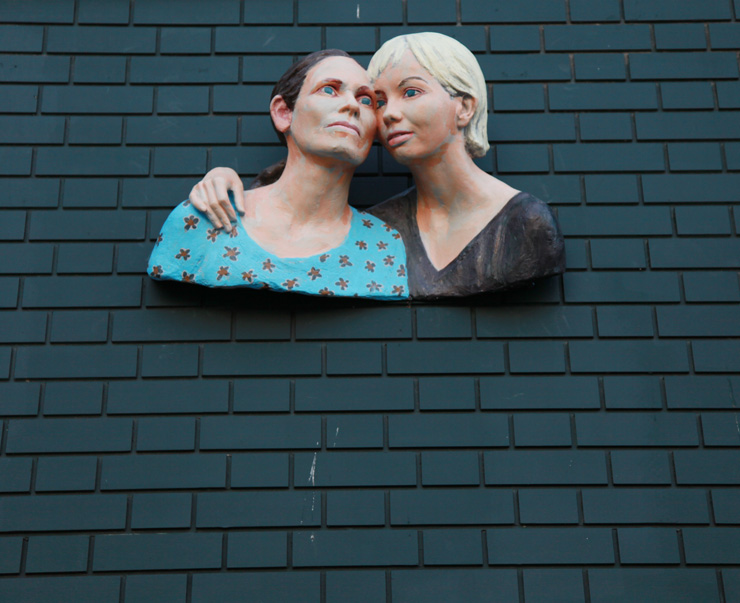When you want to experience the neighborhoods of New York, you go walking on our streets. When you want to study the people who are New York, you go to John Ahearn.
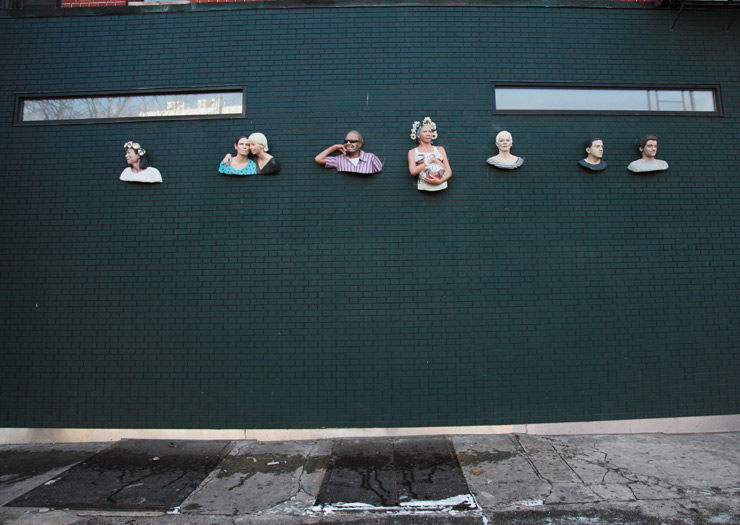
John Ahearn. Delancy Street Denizens (on John Ahearn imagination). Delancy Street, NY. January 2017. (photo © Jaime Rojo)
From left to right: Chin Chih Yang, Coleen Fitzgibbon and daughter Kelly Otterness, Steve Cannon, Juanita Lanzo, Pat Place, James Fuentes and Lee Quinones.
For nearly forty years on the streets of New York this artist has been casting New Yorkers and attaching them to walls for all to see, to watch, to talk to, to argue with. In all our self-possessed and artful individual non-homogeneity, with our multitude of languages, accents, trades, styles, opinions, attitudes, and dreams John captures us, and then shares us with the neighbors.
Long before “Humans of New York” presented the idiosyncrasies in this crazy enigmatic rat trap of a city, sculptures by John Ahearn were capturing a certain bluntly tender honesty of the character of his sitters and their family members and, in doing so, giving them a certain immortality that few could claim.
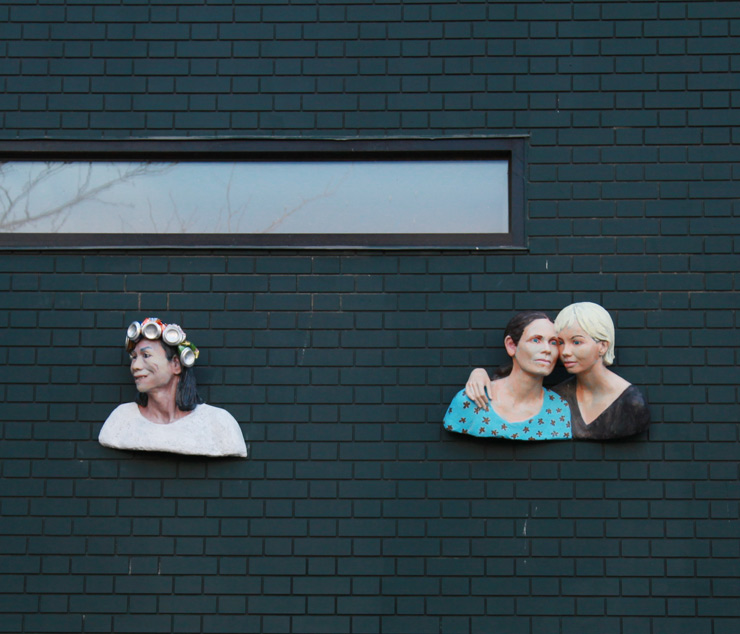
John Ahearn. Chin Chih Yang, Coleen Fitzgibbon and daughter Kelly Otterness. (photo © Jaime Rojo)
That kind of honesty may get you in hot water occasionally of course, as a public art installation during the early 1990s once revealed, when Ahearn sculpted everyday street people from his Bronx neighborhood and dared elevate them as worthy of public display. The incident caused vitriol and pearl clutching and chest pounding and a lot of spilled ink in the The New Yorker, so splendid and nerve-strumming were his honest portrayals of New Yorkers.
It also revealed latent here-to-fore unspoken prejudice, pride, racism, and classism and put it all muddily and bloodily on parade; in other words, an American story. The writer Jane Kramer rightly asked in that article’s title “Whose Art Is It?” – a lengthy piece which was later published as a book. As many artists who take their inspiration from the street and who give their work to the street will tell you, Ahearn had already answered that question of whose are it is. It’s yours.
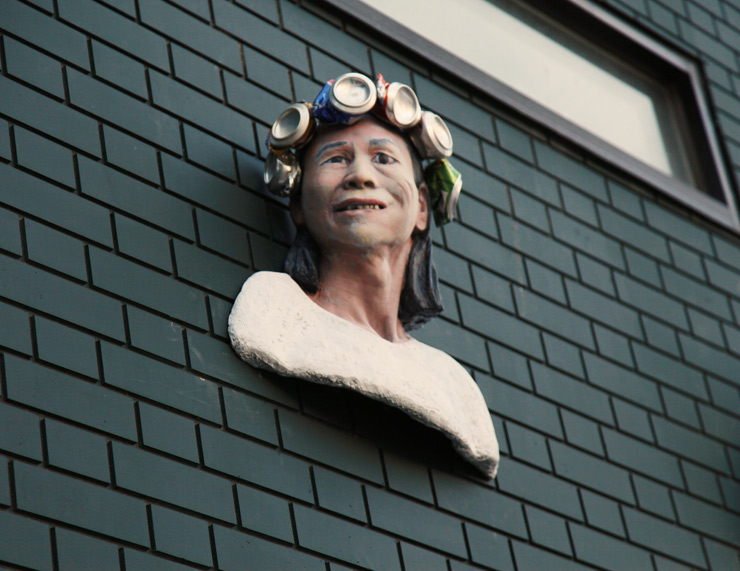
Chin Chih Yang a native Taiwanese artist whose performance art sounds the alarm for the planet. He was cast on the sidewalk at 56 Delancey St. 5/4/15 (photo © Jaime Rojo)
A brand new installation this month on Manhattan’s Lower East Side by Ahearn again elevates your neighbors to a recognized position of prominence, recalling local cultural history and those of our families. As his custom of working within context demands, this line up of people is as significant as their location. A post punk musician from the downtown scene that flourished here when artists flooded this neighborhood and the city was broke, a colorful performance artist, a gallerist, a hometown all city 1970s train writer, John’s own lady pregnant with their child. These are personal stories of life in this city, here on the wall while the cars and taxis and delivery box trucks and tractor trailers roar and halt and honk and rumble by 24 hours a day.

John Ahearn. Artist and graffiti writer Lee Quinones, childhood and early adult life cast from 1986 in Mr. Ahearn’s Bronx studio. (photo © Jaime Rojo)
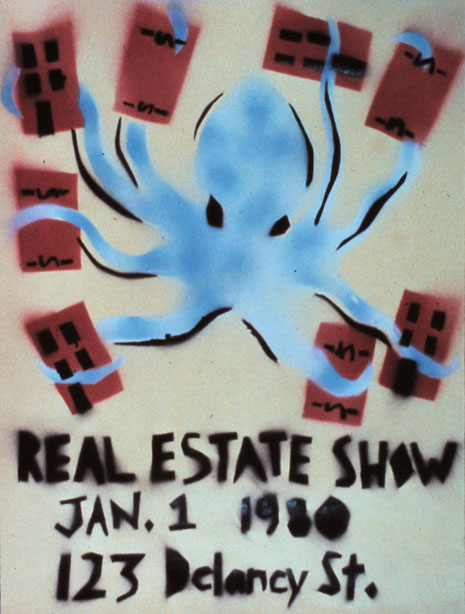 “The life on Delancey Street is the aim of the work. Friends from Colab took over a building there in January 1980 and proclaimed it “The Real Estate Show,” says Ahearn of the touchstone illegal show that happened four blocks from this new installation on James Fuentes Gallery. It is almost like he’s reflecting wistfully on that earlier time with this new choice of subjects recalling the art scene in this part of town – as if the geography of the city might invoke the hallmark Bohemian spirit that has been steadily and mercilessly stamped out by shiny bulldozers of impossible rents and dull luxury hotels serving rooftop cocktails.
“The life on Delancey Street is the aim of the work. Friends from Colab took over a building there in January 1980 and proclaimed it “The Real Estate Show,” says Ahearn of the touchstone illegal show that happened four blocks from this new installation on James Fuentes Gallery. It is almost like he’s reflecting wistfully on that earlier time with this new choice of subjects recalling the art scene in this part of town – as if the geography of the city might invoke the hallmark Bohemian spirit that has been steadily and mercilessly stamped out by shiny bulldozers of impossible rents and dull luxury hotels serving rooftop cocktails.
The seminal “Real Estate Show” opened on the last day of 1979 and closed the first day of 1980 by force of city officials, who are said to have padlocked the art inside the building and out of reach of everyone, including Ahearn. The show and the events surrounding it highlighted the same issues that struggling artists in many cities are facing across the country today; trying to develop alternative spaces in a hostile rental market, city agency bureaucracy, largely absent institutional support, murky grey areas of legality/illegality, crime, real estate speculators, intimidation and of course, gentrification.
John Ahearn. Filmmaker Coleen Fitzgibbon and daughter Kelly Otterness cast 6/15/15 at her nearby Ludlow St. studio. (photo © Jaime Rojo)
The police shutdown of that show galvanized the artist community and became part of the Downtown art scene lore and along with three other LES galleries James Fuentes himself made an homage to The Real Estate Show in 2014. Fuentes also posed for one of these new sculptures for “Delancey Street” while at one of those galleries, Cuchifritos, located down the block. Ironically, Fuentes is further connected to the work of Ahearn by dint of growing up in the early 1980s directly across the street from an Ahearn public sculpture mural called “Bronx Double Dutch” (1981-82), a casted mural of girls jumping rope that still hangs there today. (see below)
Ahearn had begun his public sculptures only a year or two earlier in 1979. “I was casting faces of neighbors at Fashion Moda in the Bronx in 1979 and people passing on the street would stop and watch,” he says. After meeting the nephew of a guy who owned a nearby statuary factory, John and Rigoberto Torres began to work together as a team.
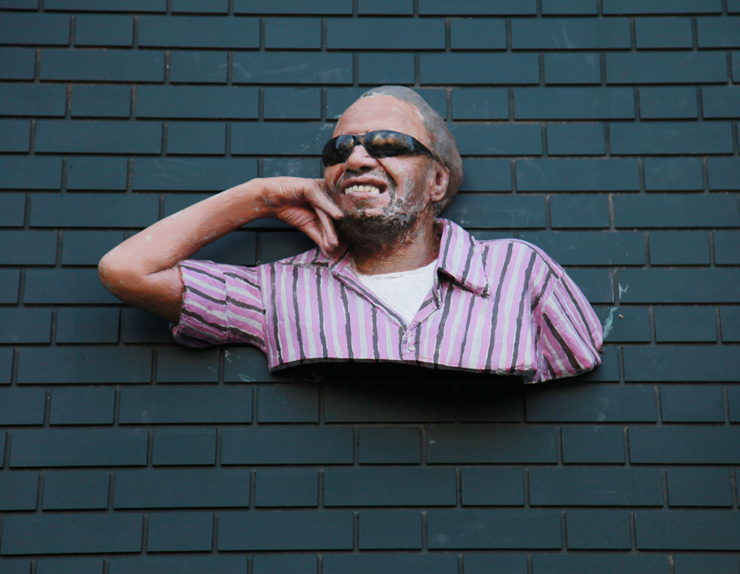
John Ahearn. Steve Cannon, poet and founder of Tribes cast nearby at his home (with Bob Holman) 3/13/15 (photo © Jaime Rojo)
“I gave Rigoberto some materials and he cast some friends on the sidewalk on his block at Walton Avenue,” he says of the partnership that lasted a number of years. “I moved to Rigoberto’s block soon after.” Both built their craft and confidence and community ties by setting up a long-time public presence working on the street and eventually set up a studio together on Dawson Street to begin making a series of permanent fiberglass culture murals.
Today on a warm summer day you can find John on the street in the summer in the Bronx, or out at Welling Court in Queens, or a Street Art festival in Baltimore, casting the people who are calm enough to stick straws up their noses and be draped with wet plaster and to remain still until it dries.
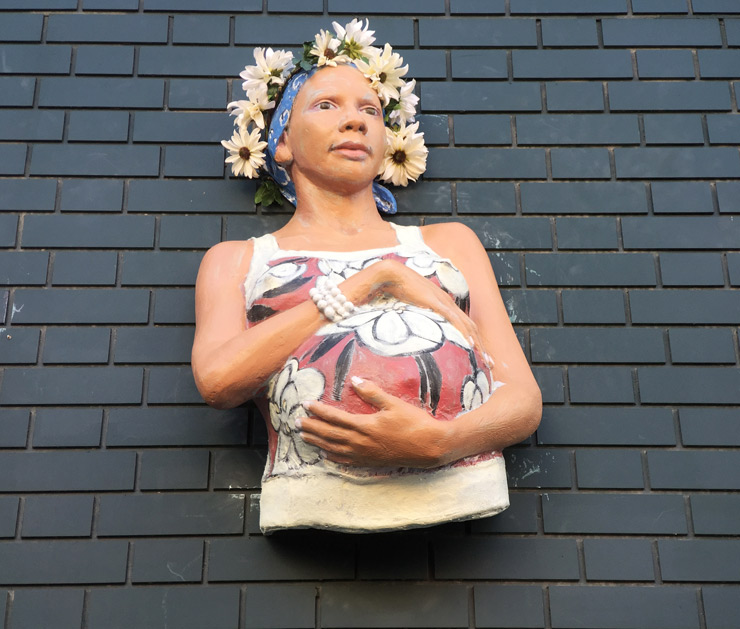
John Ahearn. Juanita Lanzo artist and mother of John’s son Carlos was originally cast naked in 5/13/09, but was “clothed” for this presentation in 2015. (photo © Jaime Rojo)
Even in 1980 it was a challenge for children to complete a sitting for him. “It became a point of pride for young kids to demonstrate their confidence,” he says, blue eyes smiling. “The little kids would come up to us and say “Let me do it! I’m ready!’ and I would say “No, you’re not ready, you have to wait!” When Ahearn talks with his infectious enthusiasm, you know he’s giving as much energy to his work as he is getting from it and he can tell you countless stories about the people he has profiled, what kind of work they do, who they are married to, where they went to school.

John Ahearn. Monxo Lopez. The Bronx. January 2017. (photo © Jaime Rojo)
Just this past Saturday on the blue bricked wall over a tire shop near his studio in the Bronx Ahearn installed his most recent portrait of a neighbor whom he has known for years. Monxo Lopez went to school with John’s wife Juanita in Puerto Rico and he is a social organizer and professor who lives nearby the tire shop, John tells you. Posing in the Bronx ‘resistance’ gesture that also recalls the borough’s letter “x”, Lopez had been trying to get John to make this of him for a couple of years, but the scheduling didn’t fall into place.
The newest work is just as authentic as ever, distilling personality, stories, relationships and inferred community in the same way that all of John Ahearn’s sculptures do.
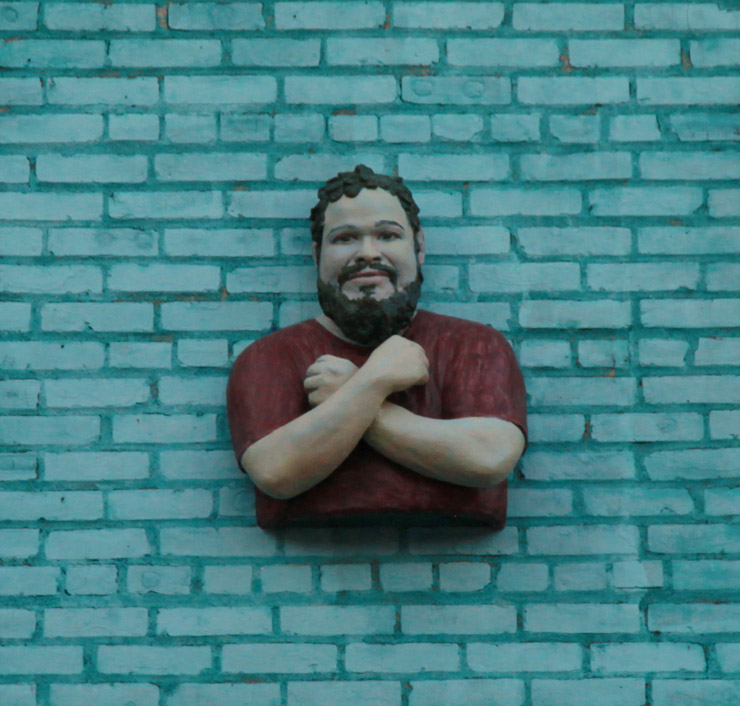
John Ahearn. Monxo Lopez. The Bronx. January 2017. (photo © Jaime Rojo)
“I always liked this tire shop better than my studio space nearby because it is so social. It’s loud and bustling,” he says with something you could may interpret as glee.
“Everyone is yelling and telling jokes all day,” he says. “The owner, Mike, and I are friends – I wanted my sculpture to share this great space and Mike liked the idea.”
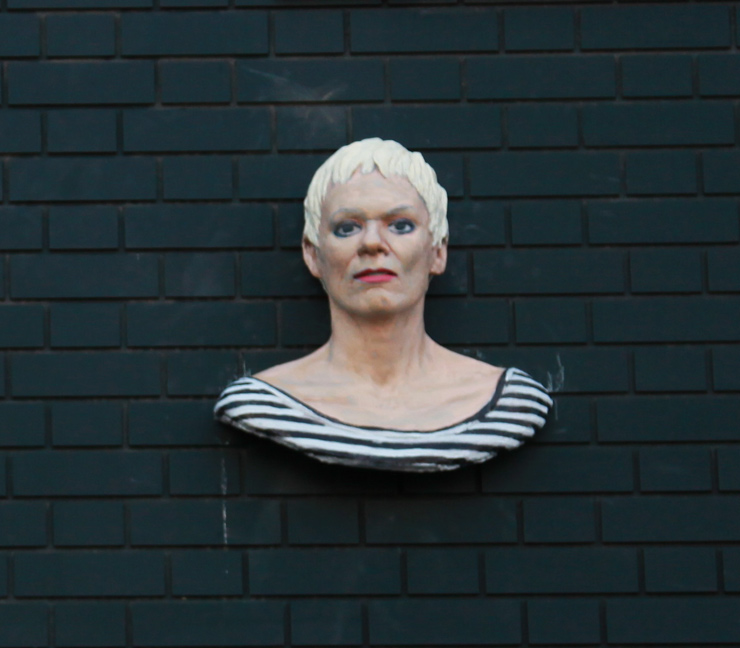
John Ahearn. Pat Place, crucial punk guitarist (Contortions, Bush Tetras) cast nearby at her home in 6/17/15. (photo © Jaime Rojo)

John Ahearn. James Fuentes born in the neighborhood, early childhood in view of the “Bronx Double Dutch” mural. Cast as “Homeboy” 4/22/14 as part of his “Real Estate Show” homage. (photo © Jaime Rojo)
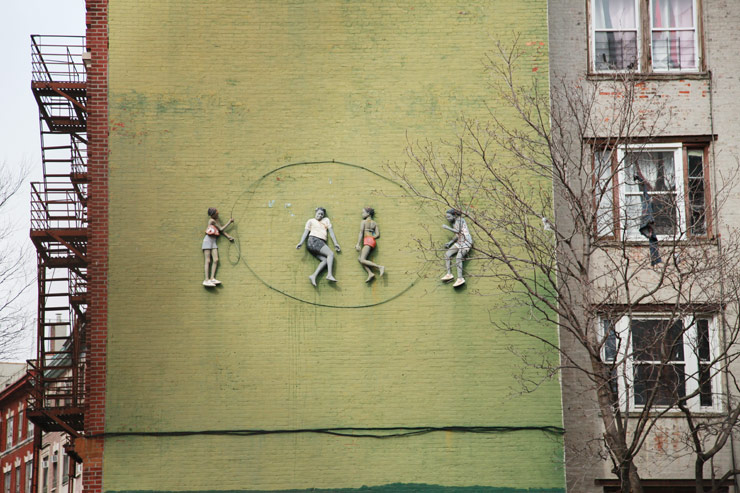
John Ahearn. “Bronx Double Dutch at Kelly Street”. The Bronx, NYC. (photo © Jaime Rojo)
The photo above shows the “Bronx Double Dutch” mural mentioned in the caption below James Fuentes photo. The mural which was erected around 1981 – 1982 at Intervale Ave and Kelly St depicts four local girls, Frieda, Javette, Towana and Stancey at play as part of Mr. Ahearn and Mr. Torres series Homage to The People of The Bronx.

John Ahearn. “Bronx Double Dutch at Kelly Street”. The Bronx, NYC. (photo © Jaime Rojo)
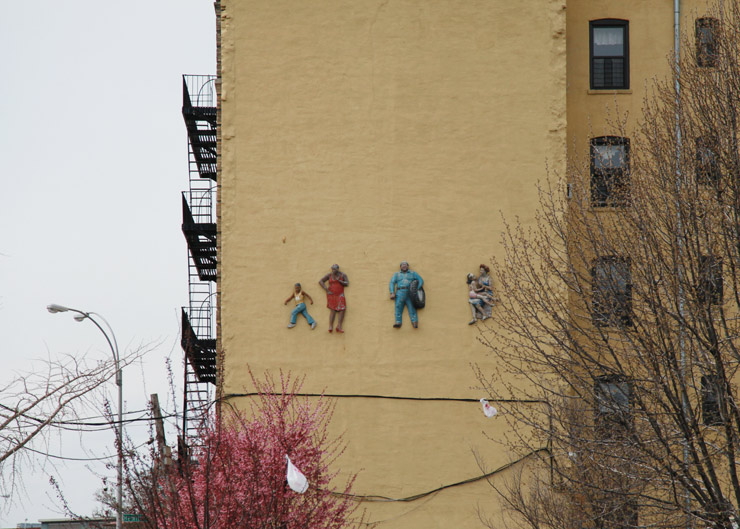
John Ahearn. “Life on Dawson Street” From left to right: Thomas, Barbara, Pedro with Tire, and Pat and Lelana at Play. The Bronx 1982- 83. (photo © Jaime Rojo)
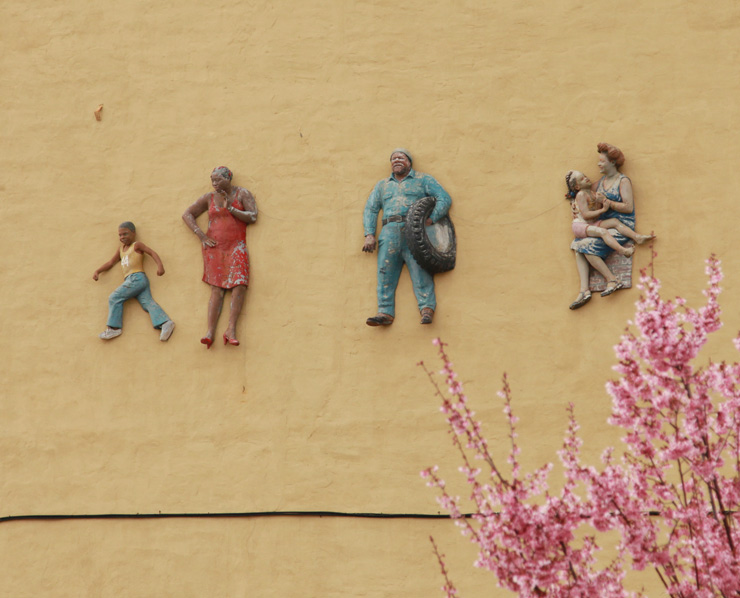
John Ahearn. “Life on Dawson Street” From left to right: Thomas, Barbara, Pedro with Tire, and Pat and Lelana at Play. The Bronx 1982- 83. (photo © Jaime Rojo)
Real Estate Show Poster by Becky Howland
Other Articles You May Like from BSA:
You never know who you will find in the BSMT, and this little blue guy from Brazil is just the perfect troublemaker to light the doorway as you pass by. A talisman for the global game of street art an...
We’ve had the privilege to travel to many cities and cultures over the last decade and a half, from Russian to Chinese to North African to Tahitian and Norwegian, to witness the affecting power of st...
Anyone born after 1960, and that includes most sticker artists on the street today, has a positive association with the humble sticker. From "smiley" and "gold star" rewards stuck to the top of your ...
Little bit of inspiration on a whole lotta wall; This just In, a new giant piece by people's champion Chris Stain and mild mannered Billy Mode on a sanctioned space in Bushwick called "Esperanza", wh...
On the scene for a couple of years on New York streets is the mystical portraitist of some secret order known only to the Pyramid Oracle. Many street artists use their tag or street name as a cover. T...
 BROOKLYN STREET ART LOVES YOU MORE EVERY DAY
BROOKLYN STREET ART LOVES YOU MORE EVERY DAY
